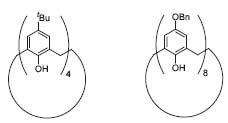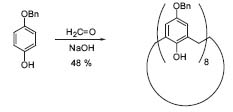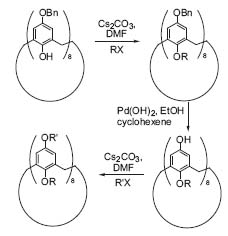Rocco Ungaro

was born in the South of Italy (Potenza province) and studied chemistry at the University of Parma, where he graduated in 1968 in the laboratory of G. Casnati. After a short stay in the pharmaceutical industry, he returned in 1970 to Parma University as a lecturer, becoming associate professor in organic chemistry in 1982 and full professor in 1986. In 1974 and 1975 Ungaro was postdoctoral fellow at the State University of New York (SUNY) in Syracuse in the laboratory of J. Smid.
He is co-author of more than 170 papers in international journals and books, including 10 review articles. He has been invited to lecture at several national and international meetings devoted to ma-crocyclic, supramolecular, organic, and inorganic chemistry and at several research institutions.
Ungaro has served as national representative for Italy in the European COST Actions D7 (Molecular Recognition Chemistry) and D1 3 (New Molecules for Human Health Care) and as treasurer of the Organic Chemistry Division of the Italian Chemical Society and is currently on several advisory committees and on the editorial board of three international journals devoted to supramolecular chemistry. In 2002 Ungaro was awarded the Research Price of the Italian Chemical Society (Division of Organic Chemistry) for “Organic Structures and Molecular Interactions”.
Scientific Sketch
With his scientific work, Rocco Ungaro pioneered the chemistry of calixarenes and their application in supramolecular chemistry. In 1979, he isolated the intracavity inclusion complex of p-tert-butylcalix[4]arene and toluene, which represents the first example of a neutral organic guest, held inside the cavity of a neutral synthetic host by noncovalent interactions. He exploited the conformational properties of calixarenes to design and synthesize novel and very selective ionophores for spherical cations (Fig. 1 and 2, J. Org. Chem. 1997, 62, 6236). He was able to show that calix[4]arene derivatives in the cone conformation are selective for sodium, calcium, and lanthanide ions, whereas those in the partial cone or 1,3- alternate conformation bind preferentially to potassium and cesium ions and conformationally mobile calix[8]arene derivatives are selective for strontium (Fig. 3, J. Am. Chem. Soc. 2001, 123, 12182). The calixarenes can easily be functionalized to change their binding properties. If special peptides are used as substituents, calix-[4]arenes can be used as vancomycin mimetics (J. Org. Chem. 2000, 65, 5026).
Ungaro’s studies led to interesting applications in ion sensors and in radioactive waste treatment and allowed the disclosure of the role of weak intermolecular interactions (CH-Π, cation-π, and π-π) in molecular recognition.
Figure 1. p-(tert-Butyl)calixa[a]arene and p-(Benzyloxy)-calix[8]arene.

Figure 2. Synthesis of p-(Benzyloxy)calix[8]arene.

Figure 3. Derivatization of p-(Benzyloxy)-calix[8]arene.

He has also carried out important studies in the field of bioorganic chemistry, synthesizing enzyme models and novel receptors for anions, carbohydrates, and small peptides, some showing biological activity.
Pasta al Forno Southern Italy Style
Starting materials (serves 6):
500 g penne rigate pasta (durum wheat semolina)1
300 g peeled tomatoes, purée (or passato di pomodoro)
300 g lean beef, ground
1 egg
1 clove of garlic, minced
1 tsp fresh parsley, minced 2
1 small shallot (or green onion)
300 g scamorza cheese3
100 g parmigiano-reggiano cheese, freshly grated
60 mL extra virgin olive oil
60 mL dry white wine
salt and pepper to taste
Procedure:
1) In a bowl stir the egg and the minced garlic and parsley, add the ground meat, salt, and pepper, and amalgamate all the ingredients until a homogeneous mixture is obtained. Prepare small meatballs of ca. 1 -cm diameter and set them aside.4
2) In a wide pan heat 60 mL of extra virgin olive oil, add the meatballs and allow them to brown evenly, then add 60 mL of white wine and continue the gentle heating. When the volume of the wine is reduced by half, add the tomato purée, the whole (peeled) shallot, some salt and stir. Reduce heating, cover the pan, and cook the sauce with the meatballs for about 45 minutes, stirring from time to time and adding water when the sauce becomes too thick. At the end, remove the whole shallot from the sauce and put it aside.
3) When the tomato sauce is almost completed, bring a pot of approx. 5 L water to the boil, add salt and boil the pasta. Drain it when it is fairly al dente (approx. 2 minutes before the recommended cooking time) and put it into a large mixing bowl. Toss the pasta with the prepared tomato sauce and meatballs, sprinkle with parmigiano-reggiano cheese (approx. 60 g), and mix well.
4) Preheat oven (180 °C), then butter (or oil) a 20–30 cm baking dish and layer it with half of the pasta. Cover it with thin slices of the scamorza cheese and add the remaining pasta to form a second layer. Sprinkle evenly with the remaining parmigiano-reggiano cheese and bake it (at 180 °C) until a golden crust (gratin) is formed on top (approx. 20 minutes). Serve immediately.5,6
1 Mezze penne or ziti can be used as well.
2 Do not use dried parsley.
3 Mozzarella cheese can be used as well.
4 This is the “rate determining” step of the entire process: it takes approx. 45 min for one person to prepare the small meatballs. Help in this step will reduce the overall time
5 All steps 1–4 , except baking for the last 20 minutes, can be done the day before.
6 The pasta al forno can be enjoyed also one or two days after cooking. In this case it is advisable to warm.
«The main reason that I selected this recipe is that I grew up with it. Several pleasant events in the small village where I was born in Basilicata (or Lucania) were celebrated with a dinner having Pasta al Forno as the main dish. The recipe probably originated from Sicily and later on spread all over Southern Italy, with some small variation from region to region. The proposed one is more typical for the mountain villages of Basilicata, Calabria, Campania, and Abruzzo.
The flavors of Southern Italy were very much appreciated by the Emperor Frederick II Hohenstaufen (1 194–1250), who was also King of Sicily and Germany. This recipe needs the patience of a chemist, especially in the preparation of the small meatballs, in order to be carried out successfully. Finally, the recipe is based on a wealth of successful experimental data and can be easily reproduced. Moreover, it is quite rich in calories and can conveniently constitute a complete meal.»
Rocco Ungaro